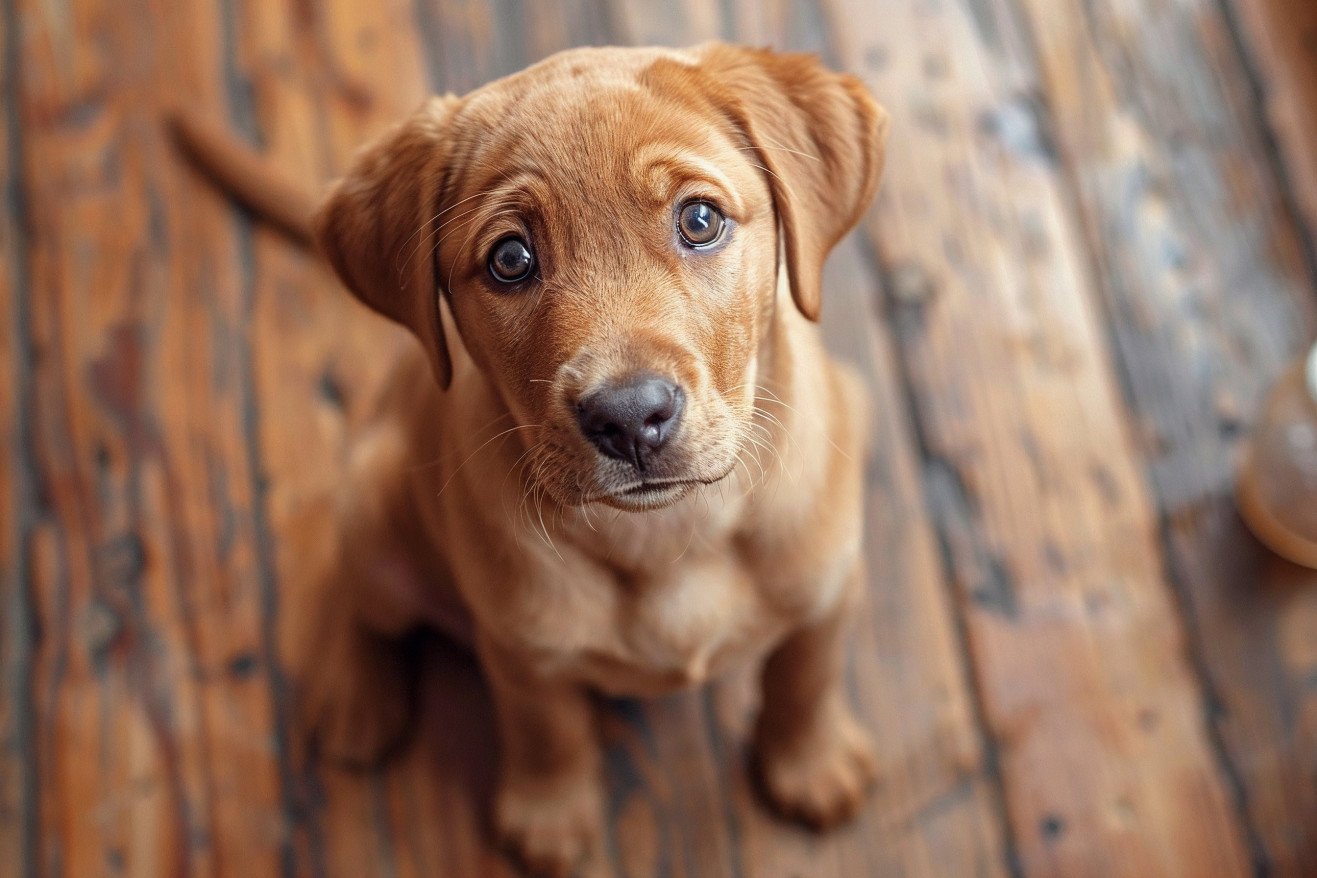How to Stop Dogs From Peeing Inside: Sprays, Training, and More
31 March 2024 • Updated 29 March 2024

If you have a dog that's peeing inside, you know how frustrating it can be. Luckily, there are several types of training and deterrent sprays that can help. Some of the best sprays to stop dogs from peeing inside include enzymatic cleaners that remove the smell that draws dogs back to pee in the same area, as well as bitter apple or citrus sprays that dogs don't like and therefore won't want to mark over.
We'll discuss the findings of animal behaviorists and veterinarians to help you determine which methods are most likely to work when you're trying to stop your dog from peeing inside. This will cover everything from making sure you've ruled out any medical reasons for the behavior, to using positive reinforcement to train your dog, to choosing the right cleaning and deterrent products based on your dog's personality and situation. By following these tips and being patient, you can make sure your dog stops this unwanted behavior.
What can I spray to keep my dog from peeing in the house?
Positive Reinforcement House Training
Positive reinforcement is a great way to house train your dog, as it focuses on rewarding the behavior you want to see rather than punishing the behavior you don't. In fact, according to The Humane Society, positive reinforcement and confidence-building exercises can go a long way in helping to resolve problems like submissive or excitement urination.
To start, make sure you're taking your dog out on a regular schedule. This may mean taking them out every hour. Then, as Daily Paws notes, be sure to be patient and wait for up to five minutes for your dog to go to the bathroom. Then, reward and praise them as soon as they do. Inside, make sure you're watching your dog closely and using crates, pens, or tethering to keep them in your sight.
Remember to be patient and consistent, especially with adult dogs who may take several months to fully house train as opposed to puppies. DogSpring Training also notes that you should be sure to reward your dog with high-value treats as soon as they go to the bathroom to help reinforce the behavior. Smaller dogs and dogs from puppy mills may take longer and need more positive reinforcement to learn.
If your dog is dealing with submissive or excitement urination, The Humane Society suggests sticking to a routine, helping your dog feel safe in stressful situations, and using confidence-building exercises to help them feel more secure. If your dog is marking their territory, make sure to clean any soiled areas with an enzymatic cleaner like Nature's Miracle to make sure you're getting rid of any odors that could attract your dog back to the same spot.
Positive reinforcement can help you build a bond with your dog and address any underlying behavioral issues that may be leading to accidents. With a little patience and the right approach that's tailored to your dog, you can successfully house train your dog using positive reinforcement.
Deterrent Sprays: Store-Bought and DIY Options
While not a standalone solution, deterrent sprays can help discourage dogs from peeing inside when used in combination with other training methods. Deterrent sprays work by creating an unpleasant smell that dogs will want to avoid, which can help prevent them from marking or eliminating in certain areas.
Many store-bought deterrent sprays contain active ingredients like pheromones, citrus scents, or bitter apple that dogs naturally dislike. According to Angry Orange, some of the smells that dogs hate the most include citrus, vinegar, chili, alcohol, and coffee grounds. These ingredients can be effective at deterring dogs from peeing in certain areas when used in a spray.
For a more natural option, you can make your own deterrent spray at home using ingredients you likely already have in your pantry. Amna Cleaning Services suggests mixing vinegar, essential oils, or citrus peels with water and spraying the solution around your home. Mustard oil, chili powder, and ammonia-soaked cotton balls can also be used as natural deterrents.
Whether you're using a store-bought or DIY deterrent spray, it's important to take safety precautions. As mentioned by TryFi, sprays should be kept away from children and other pets and stopped if your dog has an adverse reaction, like excessive sneezing or itching. It's also important to remember that deterrent sprays are a short-term solution and should be used in combination with other training methods, like positive reinforcement, to address the root causes of your dog's indoor peeing.
In addition to using deterrent sprays, it's important to clean any soiled areas thoroughly to ensure that your dog won't be tempted to pee in the same place again. The next section will discuss some of the best ways to get rid of dog urine smells and stains.
How to Clean and Get Rid of the Smell of Dog Urine
Cleaning and deodorizing any areas where a dog has urinated inside is important to prevent them from returning to the same areas. According to the Humane Society, adding a pound of baking soda to your regular laundry detergent and washing as usual can help get rid of urine smells in carpets. If the smell still lingers, the Humane Society suggests using an enzymatic cleaner to break down the urine.
For fresh urine stains, Puptrait recommends blotting up as much of the urine as possible with paper towels and newspapers. Then, spray the area with an ammonia-based cleaner like Windex to neutralize the urine. You can also apply a paste of baking soda to the area and let it dry overnight before vacuuming to help remove any remaining odors.
For dried or set-in urine stains, Rover recommends saturating the area with white vinegar, then sprinkling baking soda over the area and letting it sit for a few days before vacuuming. Enzymatic cleaners like Rocco & Roxie can also be very effective at breaking down the compounds that cause odors in both carpets and upholstery.
If urine has soaked through to the carpet padding, Carpet Tech says that professional cleaning or even replacing the carpet may be necessary. Their technicians use UV lights to find hidden urine stains and then treat them with an odor eliminator.
While cleaning and deodorizing are important parts of addressing indoor dog urination, it's also important to make sure there are no underlying medical issues, which we'll discuss in the next section.
Dealing With Underlying Medical Conditions
Before you start behavioral training or using deterrents to stop a dog from peeing in the house, it's important to deal with any underlying medical conditions. According to The Spruce Pets, urinary tract infections, incontinence, kidney disease, diabetes, and Cushing's disease are all medical issues that can cause dogs to pee in the house. Injuries, joint problems, and arthritis can also make it difficult for dogs to get up and go outside.
As noted by Vetster, medical issues such as aging, structural abnormalities, and tumors can also cause urinary issues. In addition, older dogs can develop dementia or senility, which can cause them to forget their house training. It's important to work with a vet to make sure there are no medical issues before you start training or using deterrents.
After you've ruled out any medical issues, you can create a plan that includes positive reinforcement training, targeted cleaning, and the use of deterrents to stop your dog from peeing in the house. By using a combination of methods and being patient, dedicated, and sensitive to your dog's needs, you can overcome this common problem.
Developing a Holistic Treatment Plan
To effectively address indoor dog urination, a holistic treatment plan is needed. This means that positive reinforcement training, the use of deterrent sprays, and thorough cleaning and odor removal must be used together to stop the behavior.
It's also important to develop a plan that is tailored to the dog and the dog owner's specific needs and circumstances. It's important to be consistent, patient, and persistent since it may take a while to stop the behavior. It's also important to make sure that everyone in the household is on board with the training and management plan.
Finally, if you're still having trouble or need extra help, it may be helpful to work with a professional dog trainer or animal behaviorist. With the right treatment plan and a focus on your dog's well-being, you can stop indoor urination and create a happy, healthy home.


